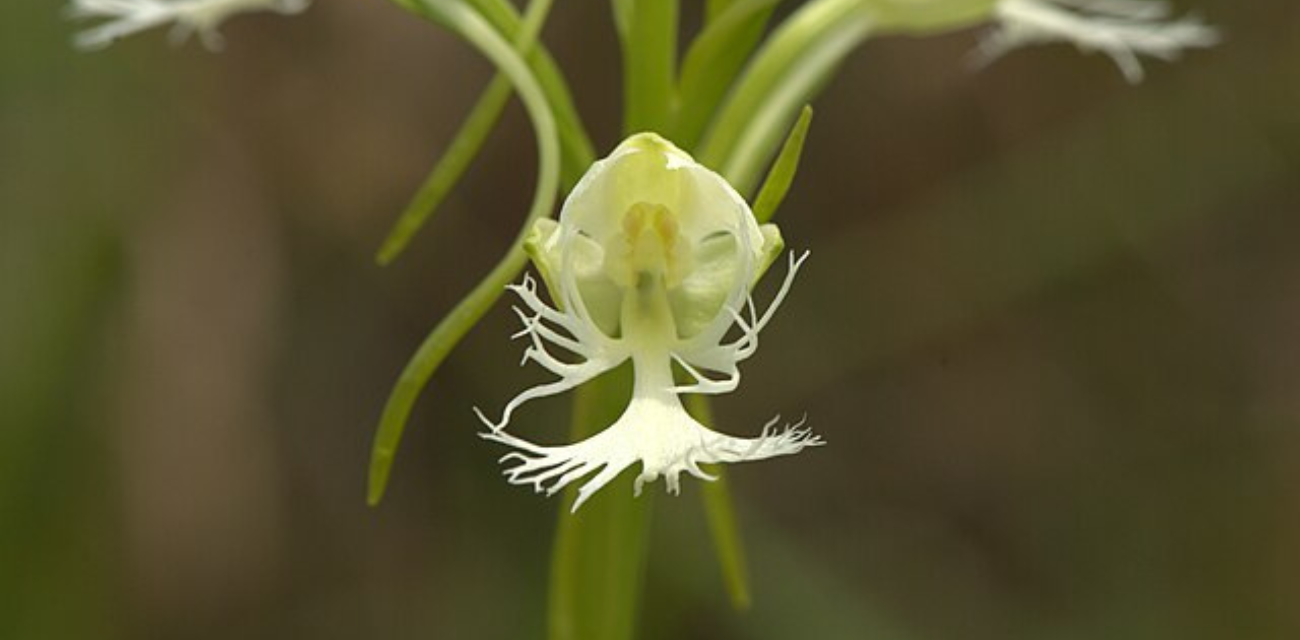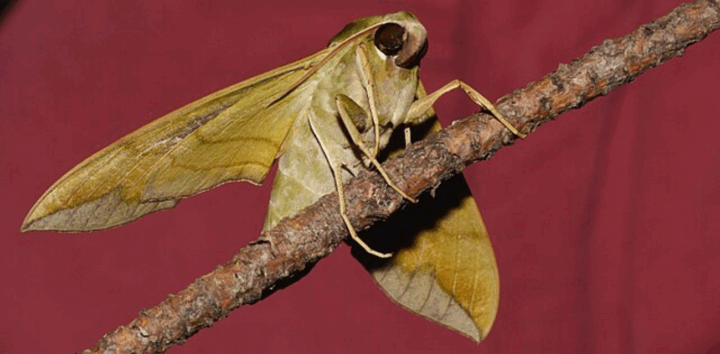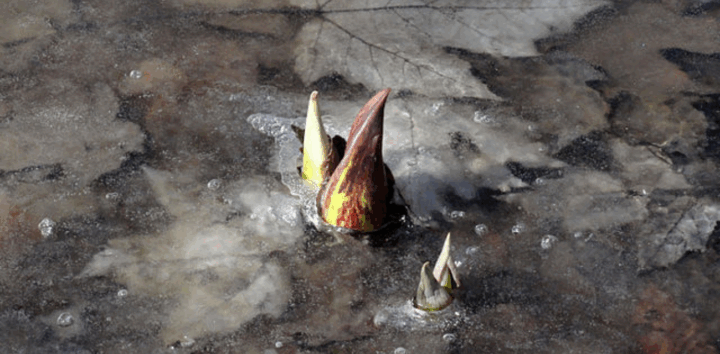Hawk moths in the night, carrion flowers on the floor

Authored by
Botanist Mike Penskar shares his favorite pollinator-plant partnerships
It was the dead of night and Mike Penskar was in the thick of a wetland, watching his coworker Dave Cuthrell catch moths, not by sight but by sound. He’d hear the wingbeats of a moth and with a swish, he’d have it in his net. It was like “some kind of quicksilver,” Penskar said.
The two were searching for hawk moths—bigger, thicker sorts, with wings built in the aerodynamic shape some jets have. And did they ever jet. Penskar went in thinking he’d see them, if not in flight, at least perched on the Eastern prairie fringed-orchid that he and Cuthrell were standing near, which relies on the moths for pollination. But they were too quick for Penskar’s eyes under the flashlight beams. Only in Cuthrell’s net could they be seen.
It’s a magical story pollinator-plant, one of many Penskar has. And while it may invoke visions of scientists gathering data in far-flung places, it happened in Michigan’s own Saginaw Bay.
Mike’s stories are of the unique, necessary relationships between the native plants of the Great Lakes State and the insects that pollinate them.

Eastern prairie fringed-orchids and hawk moths
Before he retired, Penskar was the senior conservation scientist and lead botanist at the Michigan Natural Features Inventory, a program now housed at Michigan State University.
The Natural Features Inventory is made up of biologists, botanists and ecologists working to create and share information on Michigan’s rare species and habitats. Over his 25 years, Penskar created, maintained and grew the data organization methods that the workplace now uses. Now, he is active with Michigan Botanical Society.
It was through the Natural Features Inventory that Penskar watched Cuthrell catch hawk moths. The two were studying them to help Eastern prairie fringed-orchid, an endangered plant with delicate, creamy flowers that splay out in the shape of a snow angel.
It’s not bees nor butterflies that pollinate the orchid, but just a few species of hawk moth. Like all pollinators, they take the pollen from the male reproductive organs of plants and place it in the female reproductive organs of others. Pollen leads to seeds and seeds lead to more flora.
Penskar and Cuthrell wanted to better understand the relationship between hawk moths and the orchid and use those findings to create a better protection plan for the endangered plant.
Some plants are entirely dependent on just a few species of insects to pollinate; others aren’t. The same goes for pollinators. Some need specific plants to survive; others can lean on many species.
“Here’s an orchid that had specialized conditions, specialized habitat, but we don’t know enough about its pollinators,” Penskar said. “Turns out these hawk moths, they don’t have special habitat requirements. They grow on common plants, food plants and harbor plants, so they’re not bottlenecked by special habitats. They’re just coming through pollinating these things.”
This meant that conservationists should place more emphasis on protecting the habitat of orchids and less on protecting the hawk moths—the moths had fewer special needs than their counterparts.

Eastern skunk cabbage, wild ginger and flies
For those wanting easier-to-find examples of unique pollinator-plant relationships, there is the eastern skunk cabbage.
These common forest plants are among the first to grow in the spring, and the heat their wide, leafy bodies generate melts the ice around them, allowing other flora to grow. What insects do they turn toward to populate themselves in those wet, cold weeks of March?
“Flies are out and about in the spring, and there’s not much going on,” said Penskar. “And [skunk cabbages] are saying, ‘Well, I’m gonna lure you into the bar here and get my flowers pollinated.”‘
Skunk cabbages have a thick, maroon hood—the overhead lights of Penskar’s metaphorical bar—that release a fetid odor. Some flies are drawn to it and may eat the pollen; others may take it and spread it across the landscape, helping fertilize other skunk cabbages.
The draw of flies to flowers is more common than one might think, even in Michigan. Penskar said there’s a trait in plants to produce dark, purply, fleshy, even mushy petals. It’s meant to look like carrion, which many flies like.
Wild ginger, another Michigan native, is an example of this. Outwardly, it has heart-shaped, fuzzy leaves. But pull the leaves up and the fly-enticing flowers are revealed, each laying on the ground.
“They’re like a dark maroon, like the darkest maroon you’ve ever seen, and they’re very beautiful,” Penskar said. “But they’re emulating flesh, rotting flesh.”

Beyond the relationship
The power of pollination goes beyond the relationship between plant and creature. It powers entire ecosystems.
“It’s important for fitness and for evolution,” Penskar said. “I think it comes down to maintaining ecosystem integrity. Everything depends on that… Maintaining pollinators is necessary in the basic evolutionary sense [for] maintaining fitness to survive.”
The threats to ecosystem depletion run high. Human development, climate change, invasive species, pesticides—all can throw off ecosystems and their pollinators.
These threats are explored in the Environmental Council’s podcast, Common Groundwater. Minimizing them is something the Environmental Council continues to work towards. With its ally NRDC at the helm, it’s working to limit the deadly effects of the most potent, pliable and popular pesticide, neonicotinoids.
You can learn more by reading about the latest study on neonics and the Great Lakes and by tuning into our podcast.
If you’d like to play a more active role in making change, consider signing any groups you are part of up to a letter we and allies are sending to the Michigan Department of Agriculture and Rural Development to limit the use of neonicotinoids.
Discover
Power environmental change today.
Your gift to the Michigan Environmental Council is a powerful investment in the air we breathe, our water and the places we love.
Sign up for environmental news & stories.
"*" indicates required fields




